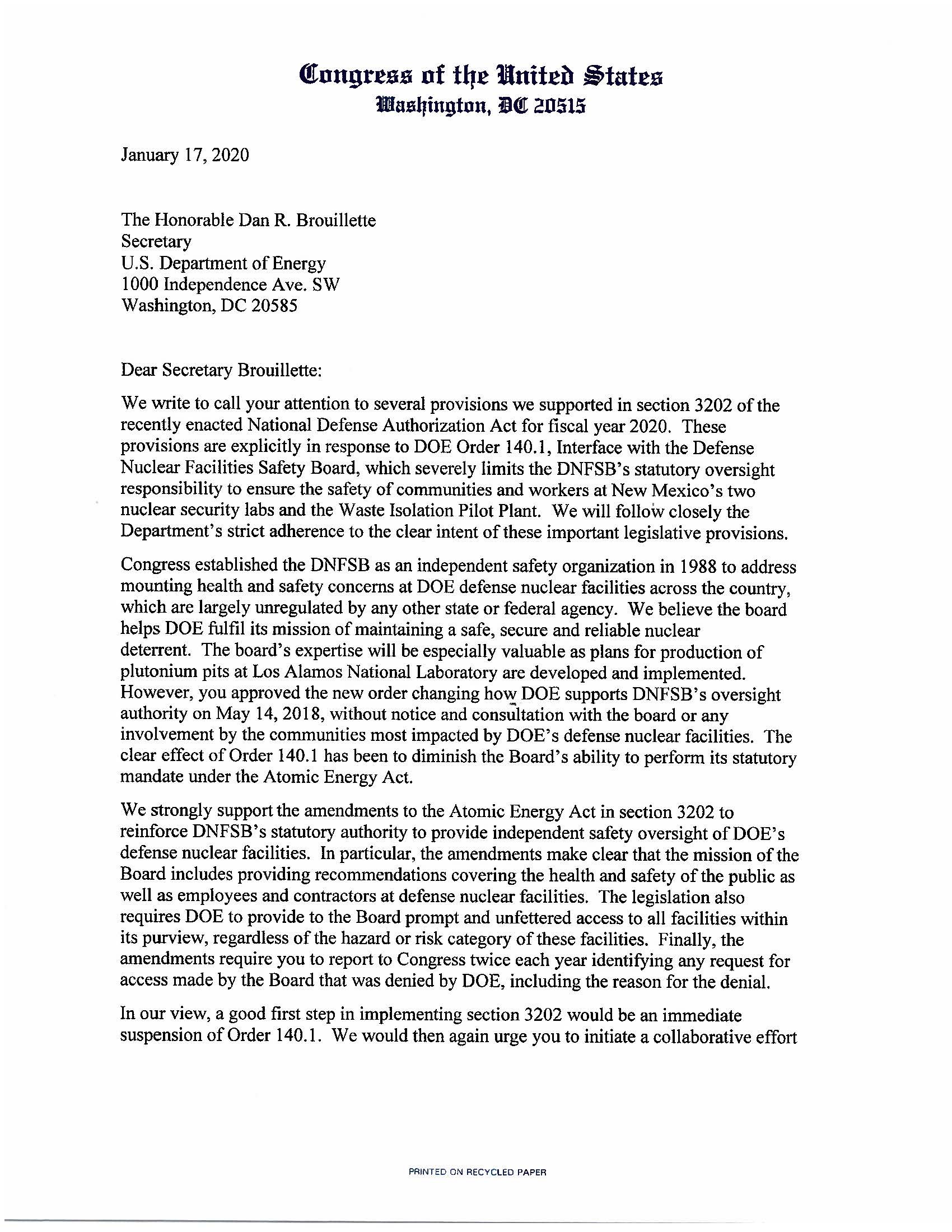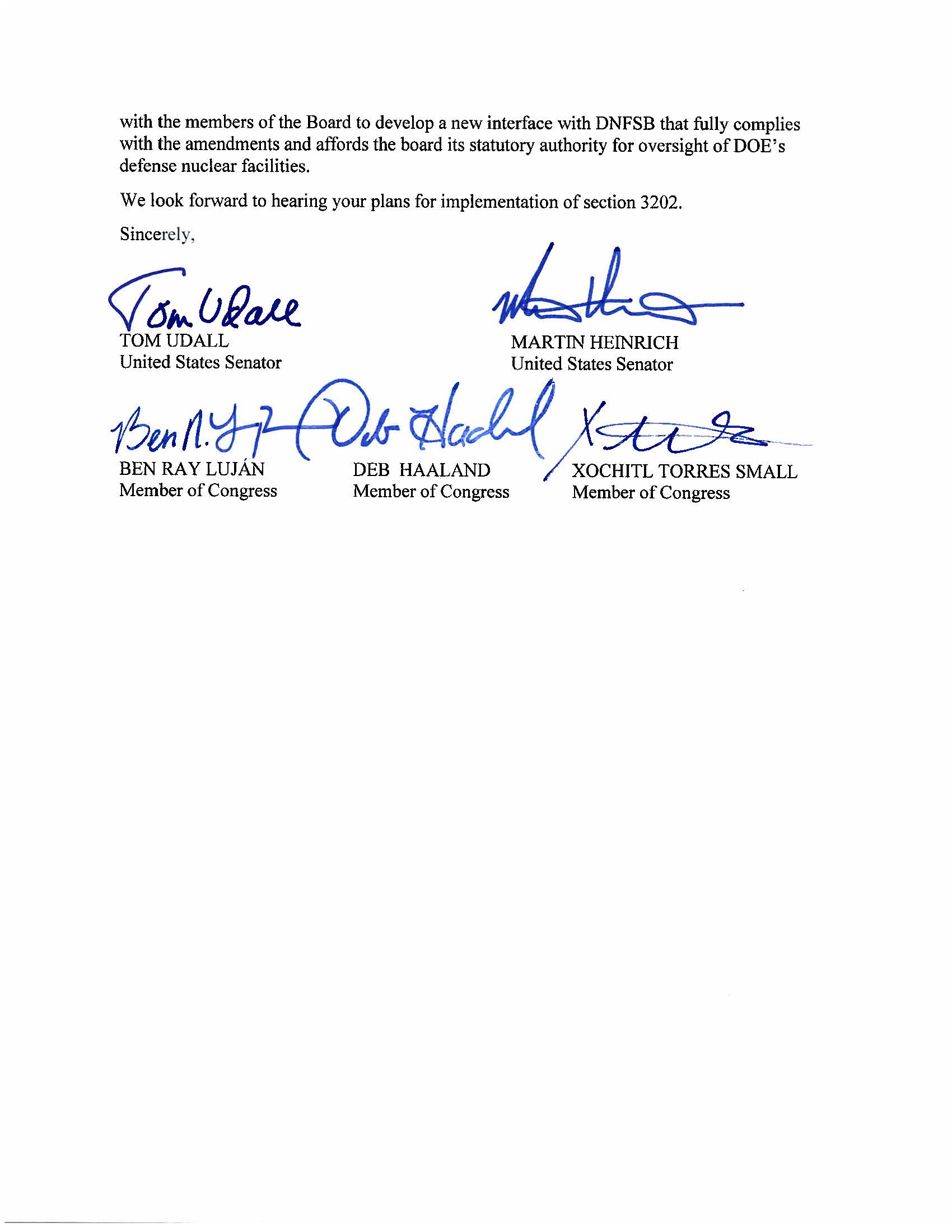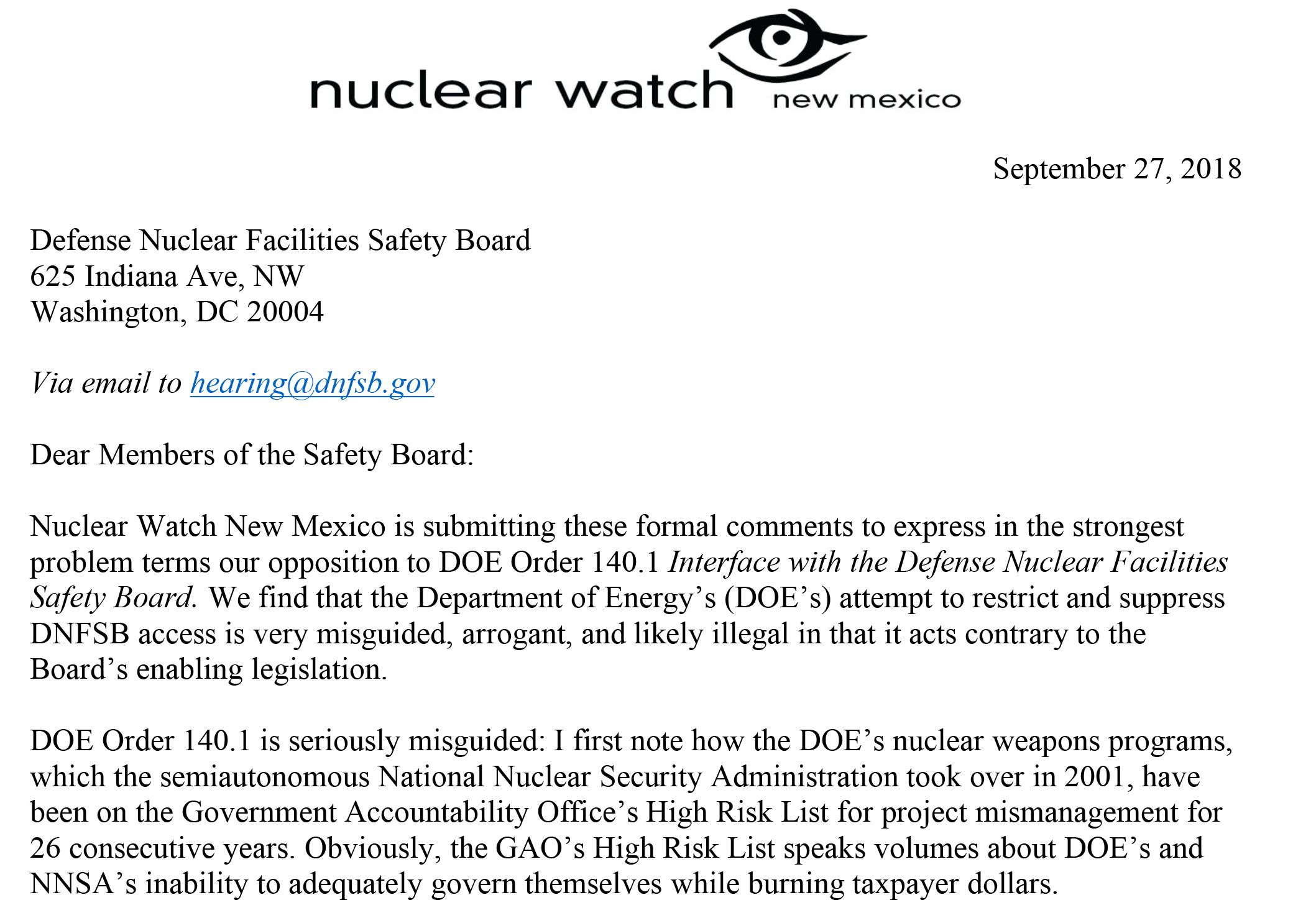WHAT IS THE DNFSB?
The Defense Nuclear Facilities Safety Board (DNFSB) was established as an independent agency on September 29, 1988, by the Atomic Energy Act of 1954. The Board is composed of five members appointed by the President, with the advice and consent of the Senate, from among United States citizens who are respected experts in the field of nuclear safety.
The DNFSB reviews and evaluates the content and implementation of standards for defense nuclear facilities of the Department of Energy (DOE); investigates any event or practice at these facilities / which may adversely affect public health and safety; and reviews and monitors the design, construction, and operation of facilities.
The Board makes recommendations to the Secretary of Energy concerning DOE defense nuclear facilities to ensure adequate protection of public health and safety. In the event that any aspect of operations, practices, or occurrences reviewed by the Board is determined to present an imminent or severe threat to public health and safety, the Board shall also transmit its recommendations directly to the President.
News & Updates
DOE Repeatedly Asks Safety Board for Time Extensions, Los Alamos Lab Asked for >150 Cleanup Milestone Extensions, But During Pandemic NNSA Rejects NM Senators’ Request for Extension of Public Comment on Plutonium Bomb Core Production
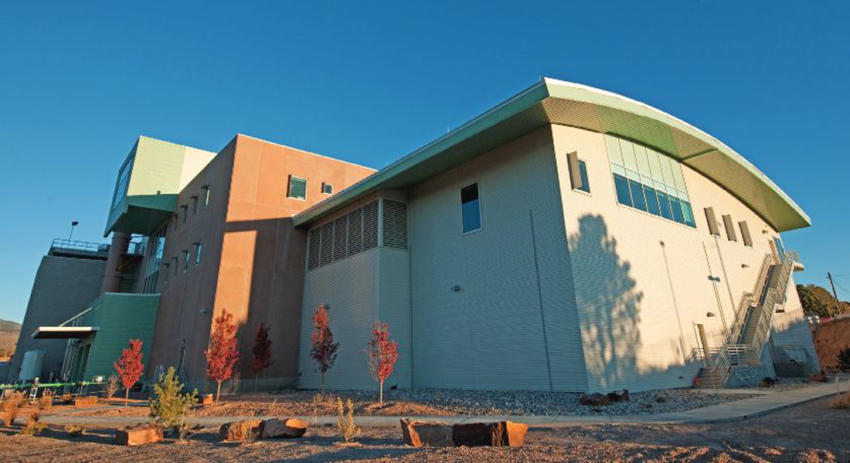
Lisa Gordon-Hagerty, head of the National Nuclear Security Administration (NNSA), has rejected a request by New Mexico Senators Tom Udall and Martin Heinrich to extend the public comment period on expanded plutonium “pit” bomb core production because of the COVID-19 pandemic. In contrast, even in normal times NNSA and its parent Department of Energy routinely ask other government agencies for major time extensions when it comes to cleanup and independent oversight.
The two Senators requested a 45 day comment period extension on behalf of more than 120 organizations and individuals. Before that, Tom Udall and Martin Heinrich were among 24 Senators who asked the Office of Management and Budget to extend all federal public comment periods during the coronavirus national emergency.
LANL Plans to Release Up To ~100,000 Curies of Radioactive Gas
Santa Fe, NM – On March 11, the Los Alamos National Laboratory (LANL) sent the federal Environmental Protection Agency a formal notice that the Lab will intentionally release up to some 100,000 curies of tritium, a radioactive isotope of hydrogen gas, beginning April 17, 2020.
An internal Lab document states that actual “anticipated emissions” could be half that because of tritium remaining behind in equipment but offers no documentation to substantiate it. During the 1980’s LANL arbitrarily used a self-declared “building shielding factor” not approved by the EPA that reduced its legally required annual calculated radioactive air dose to the public by a third. When that reduction was disallowed LANL was in fact in legal violation of the Clean Air Act. With that as an example, undocumented reductions in radioactive doses claimed by LANL should be viewed with suspicion.
Proposed New Exhaust at WIPP Designed to Release Radiation
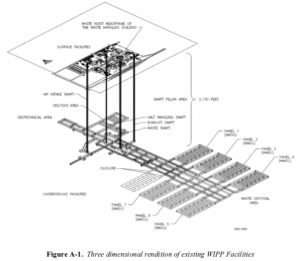
19 seconds – the amount of time airborne radiological contamination could be released before the safety dampers close. This assumes that all other components work perfectly.
A recent report from the Defense Nuclear Facilities Safety Board (DNFSB) explains the DNFSB’s calculations on the proposed new (estimated at nearly $300 million) safety significant confinement ventilation system (SSCVS).
Faulty Radioactive Liquid Waste Valves Raise Crucial Plutonium Pit Production and Safety Board Issues

There should be no expanded pit production until nuclear safety is fully assured by an independent, unrestricted Safety Board, and our congressional delegation should be the first to demand that.
WIPP Receives Notice of Upcoming Investigation for Chemical Overexposures to Workers
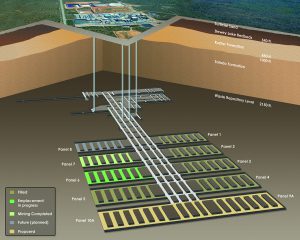
On January 29, 2019, DOE’s Office of Enterprise Assessments notified Nuclear Waste Partnership, LLC (NWP), the managing and operating contractor for the Waste Isolation Pilot Plan (WIPP), of its intent to investigate heat stress-related events and chemical exposures at WIPP. The events, occurring from July through October 2018, include multiple overexposures to hazardous chemicals, including carbon tetrachloride, nitrogen dioxide, and sulfur dioxide, as well as a series of heat-stress incidents.
ANA Press Release
Alliance for Nuclear Accountability
immediate release: Tuesday, November 27, 2018
Watchdog groups call for Congress to protect nuclear weapons communities—stop DOE limitations on Safety Board
Watchdog groups from across the country are insisting the Department of Energy withdraw DOE Order 140.1, a controversial order that would compromise safety at dozens of facilities in the US nuclear weapons complex, and are asking key Congressional committees to annul the revised order and preserve the critically important prerogatives of the Defense Nuclear Facilities Safety Board (DNFSB).
 DOE MUST RESTORE DEFENSE NUCLEAR FACILITIES SAFETY BOARD ACCESS TO INFORMATION, NUCLEAR SECURITY FACILITIES, AND PERSONNEL
DOE MUST RESTORE DEFENSE NUCLEAR FACILITIES SAFETY BOARD ACCESS TO INFORMATION, NUCLEAR SECURITY FACILITIES, AND PERSONNEL
What’s HappenedOn May 14, 2018, the Department of Energy (DOE) Deputy Secretary approved DOE Order 140.1 Interface with the Defense Nuclear Facilities Safety Board, which limits release of information, limits the DNFSB’s access to nuclear security sites, and personnel. The impacts are already being felt by Congress, the Board, DOE contractors and workers, and in communities located near some of the most dangerous nuclear facilities across the nation. |
ANA’s MessageThe Alliance for Nuclear Accountability has reviewed DOE Order 140.1 and believes it imposes a level of constraint on DNFSB that jeopardizes the important mission of the Safety Board. In fact, it may well violate the legislation that established the Board. ANA groups and the public at major DOE sites have come to rely on the Safety Board’s expertise to identify and hold accountable the DOE and National Nuclear Security Administration for worker and public safety related issues. |
ANA Letter to Congress
November 27, 2018
RE: DOE Order 140.1 should be annulled by Congress
Dear House/Senate Armed Services Committee Members:
We are writing to ask that you annul the May 2018 DOE Order 140.1, Interface with the Defense Nuclear Facilities Safety Board and reinstate the previous DOE Order 140.1.
The Defense Nuclear Facilities Safety Board (“DNFSB” or “Safety Board”) was established by Congress in September 1988 (Public Law 100-456) in response to growing concerns about health and safety protection that the Department of Energy (“DOE”) was providing the public and workers at defense nuclear facilities. In so doing, Congress sought to provide the general public with an independent source of critical oversight to add assurance that DOE’s defense nuclear facilities are safely designed, constructed, operated, and decommissioned. Over the past 30 years, the Safety Board’s authority and funding has been supported by Congress on a bi-partisan basis.

